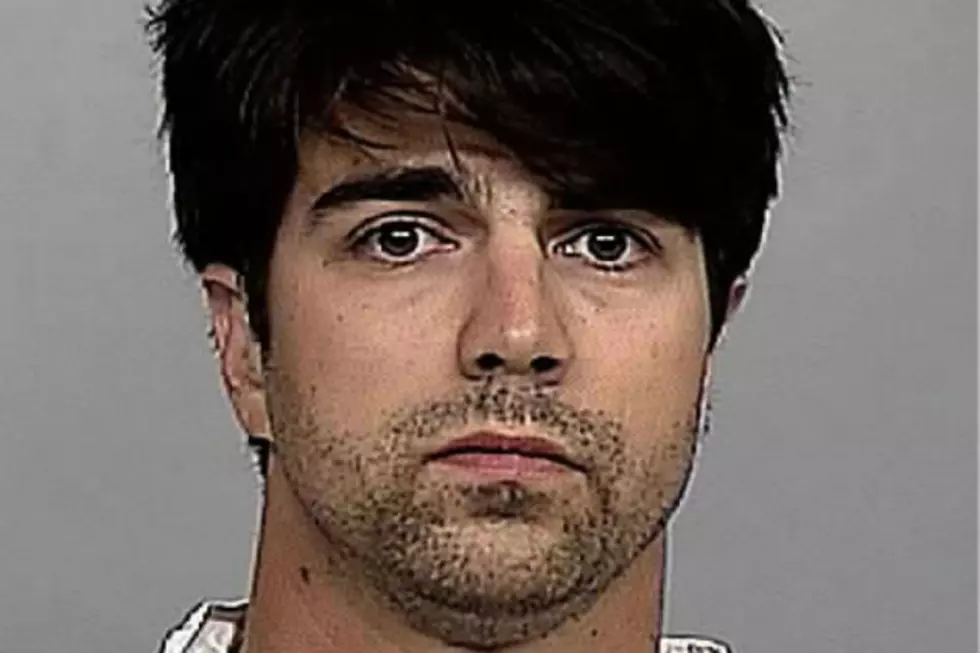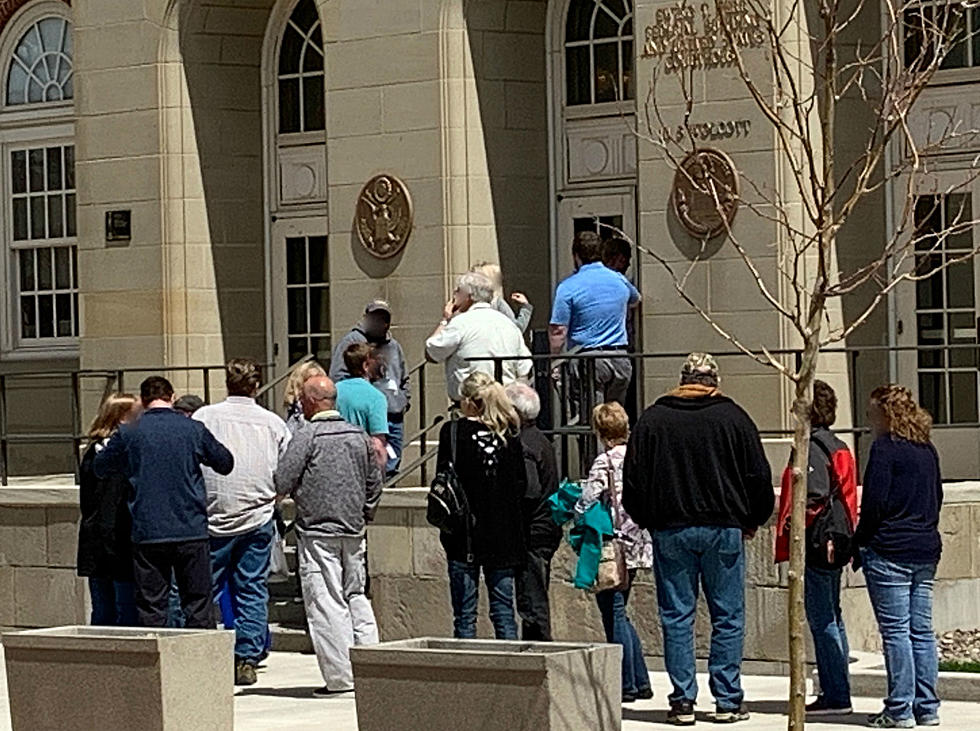
DNA Evidence Presented in Casper Child Sex Abuse Trial; Defendant to Testify
A witness for the prosecution on Wednesday laid out biological evidence which, the state says, implicates a former carnival worker in the alleged sexual abuse of a five-year-old boy last year.
Kathryn Normington, senior forensic scientist at the Wyoming State Crime Lab, told a jury of seven women and six men that biological evidence taken from the alleged victim revealed a DNA profile consistent with that of 34-year-old Joshua Ashby Winters.
Winters, Normington said, was the "major contributor" -- a term used to identify the largest source of DNA in a given sample -- of that particular sample.
A second DNA swab, from a different area on the boy, did not provide a large enough sample for Normington to draw any conclusions.
Public defender Robert Oldham, during his cross-examination of Normington, asked whether she would have expected to find Winters' DNA in the second sample, based on how Winters' DNA would have come to be in that place on the boy's body.
Normington said she would have expected to find such biological evidence in the sample, but later told prosecutor Kevin Taheri that water -- which the boy certainly came in contact with as Winters carried him across the river -- dilutes samples and can wash off what's known as "touch DNA," or biological evidence transferred by contact.
Normington also clarified, in answering Taheri's questions, that touch DNA does not transfer through clothing -- implying that in order for Winters' DNA to end up on the part of the boy's body where it was found, skin-on-skin contact would have been required.
Also on Wednesday, the state called Adam Hiatt of the City of Casper's information technology department. Hiatt testified to the authenticity of still images captured by surveillance cameras at the entrance to the water treatment plant at 1500 SW Wyoming Blvd., which showed Winters passing by the entrance twice on July 18.
The first image, from 7:42 p.m., shows a man -- purportedly Winters -- headed south on Wyoming Boulevard with a young child -- thought to be the alleged victim -- walking in the same direction some seven or eight feet behind Winters.
The next three images, taken over the course of several seconds beginning just before 7:54 p.m., show Winters running back the opposite direction. The child is not seen in the photos, and Winters is missing the shirt he was wearing in the photo captured some 12 minutes earlier.
Winters' presence with the boy in that area at that time could encourage the jury to doubt the defense's version of events. Winters contends that after leaving El Mark-O Lanes between 5 p.m. and 6 p.m. that night, he removed his shirt immediately after leaving the bowling alley and went with the boy -- who was supposedly helping Winters find his missing money -- to the river.
There, Winters says, the boy fell into the river. Winters claims to have jumped in to save the boy, gotten him safely across to the other side of the river, and fallen asleep on the riverbank shortly thereafter, waking up hours later at roughly 10 p.m. with the boy nowhere in sight.
Before Hiatt's testimony, Assistant District Attorney Brett Johnson called Helen Norcross to the witness stand. Norcross is a certified tracker with her bloodhound, Jackson, and told jurors the pair were called in to track Winters' scent on July 20.
Using one of Winters' shoes as a "scent article," Norcross and Jackson followed a scent trail from the intersection of 13th and Coulter to the south bank of the North Platte River, where Norcross said Jackson tried to follow the scent across the river.
Instead, she and Jackson went to the north side of the river and picked up the scent on the Platte River Parkway -- the walking path which runs close to the river's edge.
After acquiring the scent on the path, the dog led Norcross down to the riverbank, where the pair found a "scent pool."
"Something important happened there," Norcross told the jury. "There was a lot of apocrine scent dumped there."
Apocrine, Norcross explained, is a type of sweat gland which emits a particular type of scent that the dog can hone in on. The glands are most active when someone is apprehensive, excited or frightened.
"Something happened," Norcross told jurors. "You're not going to leave off apocrine scent unless you're nervous, scared."
From the "scent pool" near the river, purportedly in the area where Winters either sexually abused the child or fell asleep after crossing the river, Jackson led Norcross back up through the brush to the walking path, losing the scent near Wyoming Boulevard.
Then, investigators took Norcross to the area near the water treatment plant where Winters had been allegedly captured on camera. Norcross followed the dog along Wyoming Boulevard into the fairgrounds area -- not far from where the victim was later found by a passerby -- where the dog lost the scent for good.
Earlier Wednesday, a former Rhode Island State Police detective testified to having worked a case in which Winters, when he was 15 years old in the late 1990s, was accused of sexually abusing his 11-year-old adopted sister as well as his five-year-old nephew.
Wednesday afternoon, Johnson called that nephew to testify. He is now 24 years old and lives in New York State.
Winters' nephew recalled one evening in May 1998 when he told his mother about an issue with Winters.
"Me and Josh do that," he told his mother. "What do you mean?" the mother replied.
"We make babies," the nephew answered.
He went on to tell the jury about one distinct memory of himself and Winters in the basement in an abandoned house down the street from his home. Winters' nephew said Winters used baby oil and "rubbed himself" on the nephew's genitals.
Natrona County District Court Judge Thomas Sullins allowed jurors to hear that testimony under Rule 404(b) of the Wyoming Rules of Evidence. That rule prohibits jurors from considering the testimony when deciding whether Winters is guilty of the crimes charged against him in this case.
However, should jurors find Winters guilty, they would be able to use the "other crimes, wrongs, or acts" evidence when considering "motive, opportunity, intent, preparation, plan, knowledge, identity, or absence of mistake or accident," -- but only if they judge Winters guilty, first.
Sullins dismissed the jury a few minutes before 4:30 p.m. Wednesday in order to address matters that could not be discussed in front of them.
Public defender Robert Oldham moved for an acquittal on count one -- the aggravated kidnapping charge -- under Rule 29(a) of the Wyoming Rules of Criminal Procedure.
Oldham contended that the state's evidence is, as the rule specifies, "insufficient to sustain a conviction."
The subsection under which Winters is charged says he would be found guilty of he did not "release the victim substantially unharmed and in a safe place prior to trial." Oldham told Sullins the state had not presented evidence demonstrating the victim was substantially harmed while with Winters.
"I didn't see any evidence at all, your honor," Oldham told Sullins.
But sexual abuse, if proven, would demonstrate "substantial harm," Sullins replied. The state has presented considerable evidence in asking the jury to find that Winters did sexually abuse the boy.
In his response to Oldham's motion, Johnson noted that statute does not specify physical harm -- the "substantial harm" could be mental or emotional.
He also pointed to language specifying the victim would have had to be released "in a safe place," saying the boy was found anywhere but.
The boy, Johnson said, was left "on a sidewalk, crying and alone."
"I don't think that's a safe place," Johnson said.
Sullins ultimately denied Oldham's motion, pointing to case law which calls for the state to receive the benefit of all "legitimate inferences" and requires the court to assume the truth of evidence presented.
"It does appear to me there is, of record, facts to support the allegation," Sullins ruled.
The trial is scheduled to conclude Thursday, with the defense beginning presentation of its case at 9:30 a.m. The state rested its case at the end of Wednesday's proceedings.
Winters plans to take the witness stand and tell his side of the story before all is said and done.
More From 107.9 Jack FM






